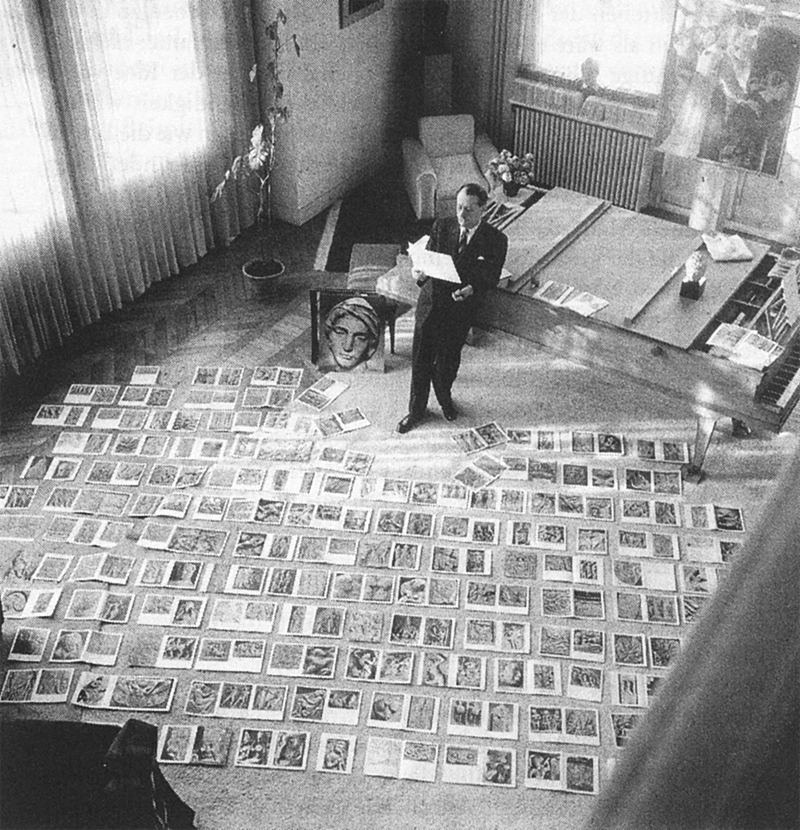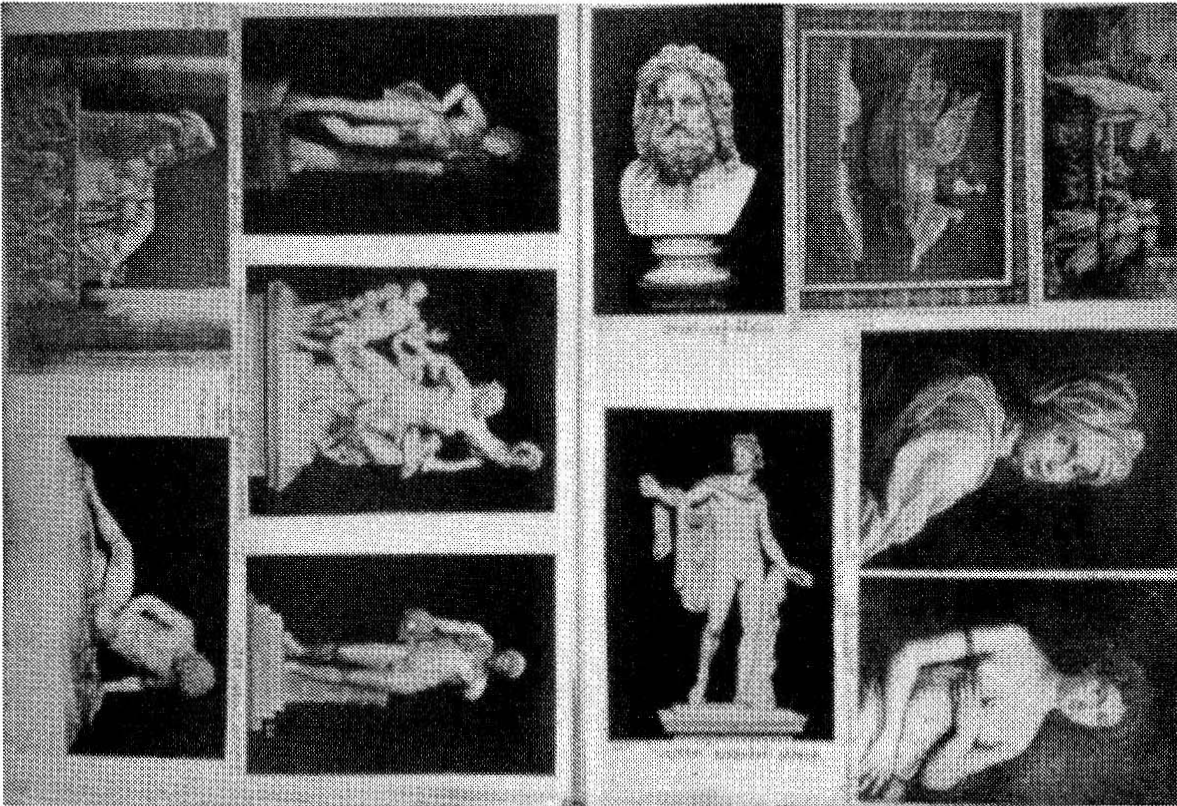102
Le Musée imaginaire
Author: André Malraux
Year: 1947 Edit Add
Book: Postmodernism, or, The Cultural Logic of Late Capitalism
Le Musée imaginaire
Author: André MalrauxYear: 1947 Edit Add
Book: Postmodernism, or, The Cultural Logic of Late Capitalism
After the emergence of theoretical discourse, however, and along with the now virtually universal feeling that (everything being a text anyway) the former context is also really just a text in its own right, since we took it from another book, some version of Malraux's practice of the creation of fictional art forms comes into being by way of what used to look like quotation. (See, for instance, the photo from Andrey Tarkovsky film Nostalgia.) It becomes ever clearer that in whatever criticism or explication de texte, but far more visibly in the more idiosyncratic practices of contemporary theory, one text is simply being wrapped in another, with the paradoxical effect that the first -- a mere writing sample, a paragraph or illustrative sentence, a segment or moment torn out of its context -- becomes affirmed as autonomous and as a kind of unity in its own right, like the devouring lions on Malraux's earrings. The new discourse works hard to assimilate the "primary text" (formerly called Literature) into its own substance, transcoding its elements, foregrounding all the echoes and analogies, sometimes even borrowing the stylistic features of the illustration in order to forge the neologisms, that is to say, the official terminology of the theoretical wrapper from them. And sometimes indeed the weaker classics melt away into their powerful theoretical spokespeople and end up as appendixes or extended footnotes to a named theoretician. More often, however, the lasting result is rather this secondary and not altogether intended one of loosening the primary unity, dissolving a work into a text, releasing the elements and setting them free for semiautonomous existence as information bits in the message-saturated space of late-capitalist media culture or "objective spirit." But in this case the movement can be reversible, as when writers like Samuel Delany drew the terminological fragments of theoretical discourse back into their own official "literary production" and leave them embedded there, like fossils in stratified remains or the outlines of some atomized body in a future Pompeii. "Fragments" in theoretical discourse are not, in any case, such pieces of a former work of art but rather the terms themselves, the neologisms, which, having become ideological logos, then spray out into the social world like so much shrapnel, passing into general usage and describing their parabola with diminishing force until they end up lodging in this or that immovable obstacle which may, of course, end up simply being the media in its own right.
After the emergence of theoretical discourse, however, and along with the now virtually universal feeling that (everything being a text anyway) the former context is also really just a text in its own right, since we took it from another book, some version of Malraux's practice of the creation of fictional art forms comes into being by way of what used to look like quotation. (See, for instance, the photo from Andrey Tarkovsky film Nostalgia.) It becomes ever clearer that in whatever criticism or explication de texte, but far more visibly in the more idiosyncratic practices of contemporary theory, one text is simply being wrapped in another, with the paradoxical effect that the first -- a mere writing sample, a paragraph or illustrative sentence, a segment or moment torn out of its context -- becomes affirmed as autonomous and as a kind of unity in its own right, like the devouring lions on Malraux's earrings. The new discourse works hard to assimilate the "primary text" (formerly called Literature) into its own substance, transcoding its elements, foregrounding all the echoes and analogies, sometimes even borrowing the stylistic features of the illustration in order to forge the neologisms, that is to say, the official terminology of the theoretical wrapper from them. And sometimes indeed the weaker classics melt away into their powerful theoretical spokespeople and end up as appendixes or extended footnotes to a named theoretician. More often, however, the lasting result is rather this secondary and not altogether intended one of loosening the primary unity, dissolving a work into a text, releasing the elements and setting them free for semiautonomous existence as information bits in the message-saturated space of late-capitalist media culture or "objective spirit." But in this case the movement can be reversible, as when writers like Samuel Delany drew the terminological fragments of theoretical discourse back into their own official "literary production" and leave them embedded there, like fossils in stratified remains or the outlines of some atomized body in a future Pompeii. "Fragments" in theoretical discourse are not, in any case, such pieces of a former work of art but rather the terms themselves, the neologisms, which, having become ideological logos, then spray out into the social world like so much shrapnel, passing into general usage and describing their parabola with diminishing force until they end up lodging in this or that immovable obstacle which may, of course, end up simply being the media in its own right.
 Source type: picture
Source type: pictureInfo: “André Malraux chez lui” (©Maurice Jarnoux)
Original size: 800x830 px. Edit
 Source type: picture
Source type: pictureInfo: Le musée imaginaire - Essay by André Malraux
Original size: 1177x806 px. Edit
 Log-in
Log-in